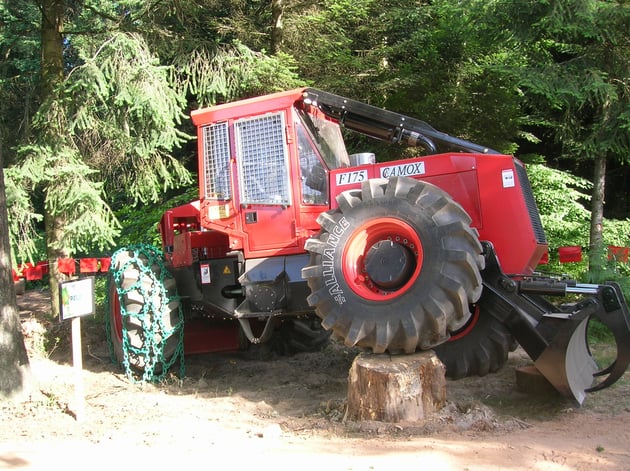Primex Tires for Wood Pellet Operations
In recent years, European policymakers have pushed utilities to find alternatives to burning coal for energy. The result of this push has been the emergence and explosion of the wood pellet industry in the United States, and no one is benefiting more from this bull market than southeastern foresters. It’s estimated that the wood pellet market jumped from 1,000 tons produced in 2009 to over 5 million tons being produced today. But, like many emerging and fast-growing industries, the wood pellet industry has been met with speculation about its sustainability and its impact on the land that supports it.

Critics of the wood pellet market cite that cutting down a tree, grinding it, shipping it, and burning it for electricity releases carbon into the air, and in the end is more damaging than burning coal. Because of this, critics believe the wood pellet industry is neither renewable nor sustainable. Critics further argue that the wood pellet industry in the south threatens sensitive bottomland hardwood forests, a feature unique to the south that helps with flood control and filtering water, while also providing a home for imperiled and endangered wildlife.
Proponents of the wood pellet market contend that burning wood pellets in favor of coal has allowed European energy producers to reduce their greenhouse emissions by up to 80%. Furthermore, they argue that all wood pellets are produced using responsible and sustainable practices—after all, healthy forests are key to wood pellets remaining a viable, long-term alternative to coal. Worth noting is that most wood pellets are not made from high-grade lumber; rather, they are made from low-grade or leftover materials such as pulpwood, crooked or diseased trees, limbs, tops, chips, and sawdust—better said, they are made using wood cast off from more profitable uses. Lastly, the wood pellet industry has been a boon to the rural south where economic opportunities can be scarce.
With the demand for wood pellets on the rise, the wood pellet industry isn’t going away any time soon. While the critics and proponents of the southeast’s wood pellet industry disagree over the pros and cons of the business, the best thing the companies involved with wood pellets can do is minimize their impact. This is where we can help with our line of Primex forestry tires. Tires like the LogStomper Super Flotation HF-4 can carry the largest and heaviest machines while lightening downward compaction forces and reducing damage to the forest’s soil and root systems. With steel undertread plies and Kevlar reinforced sidewalls, LogStompers are built with longevity, durability, and a low total cost of ownership (TCO) in mind.
Helping not only your business, but the reputation of the business you're in, Primex tires can help increase productivity and efficiency, while also helping to reduce fuel consumption (and your carbon footprint). Primex’s reputation for durable and long-lasting logging tires means fewer trips back to the shop—and fewer tires consumed—while harvesting and transporting wood, helping to keep your company in the green. Lastly, the Primex line of flotation tires are designed to minimize impact on delicate forests soils, helping to keep the forest happy and healthy—which is something people on both sides of the wood pellet issue can agree is a good thing.


